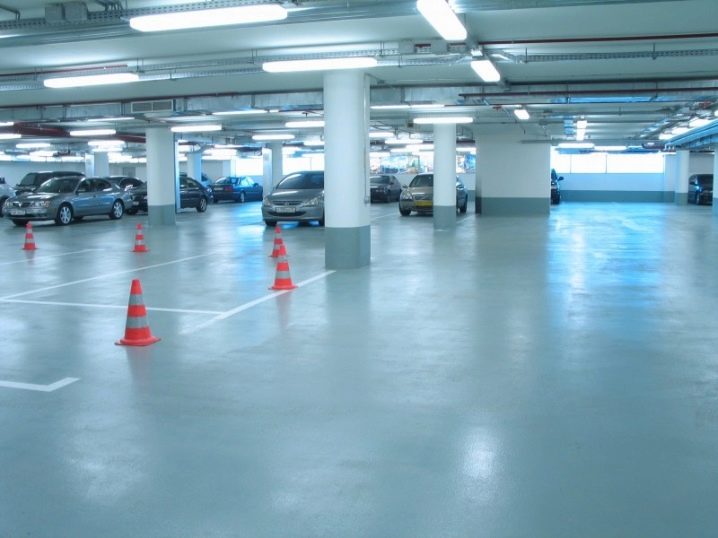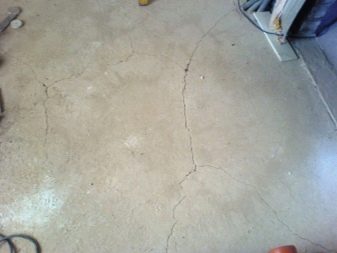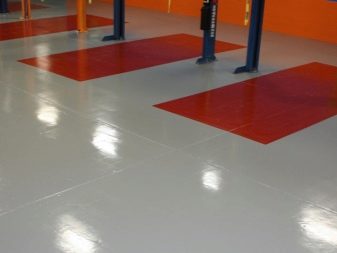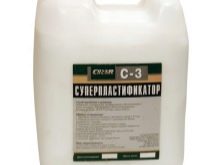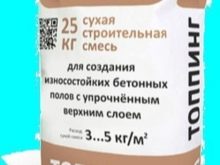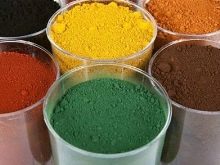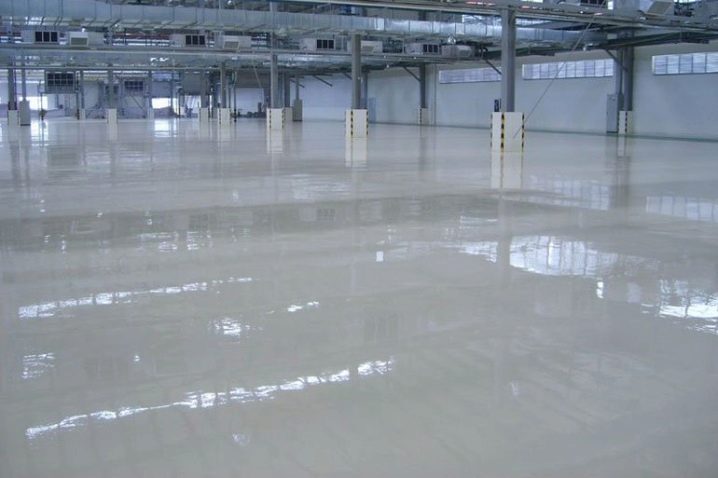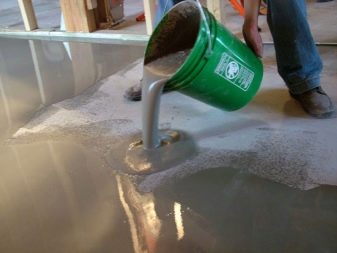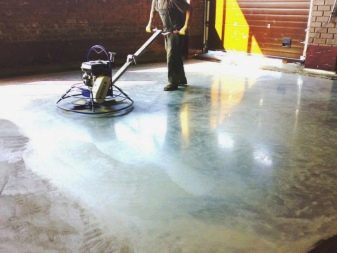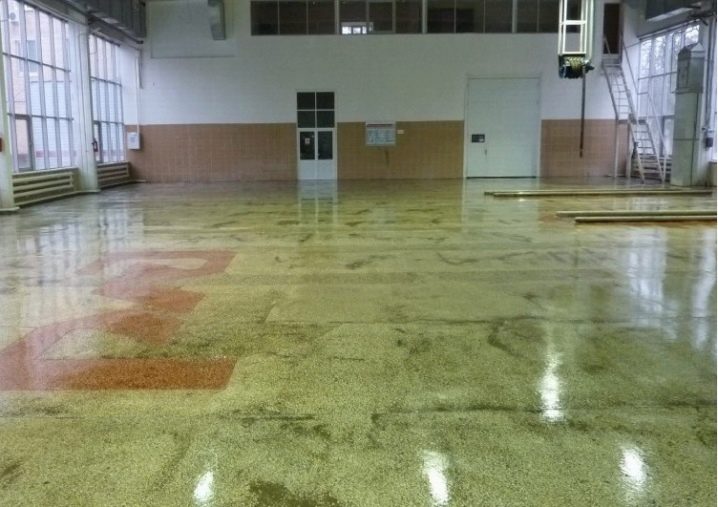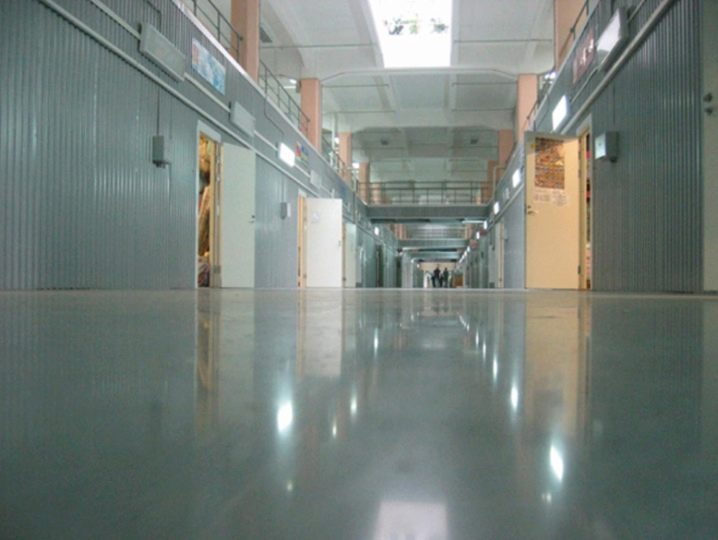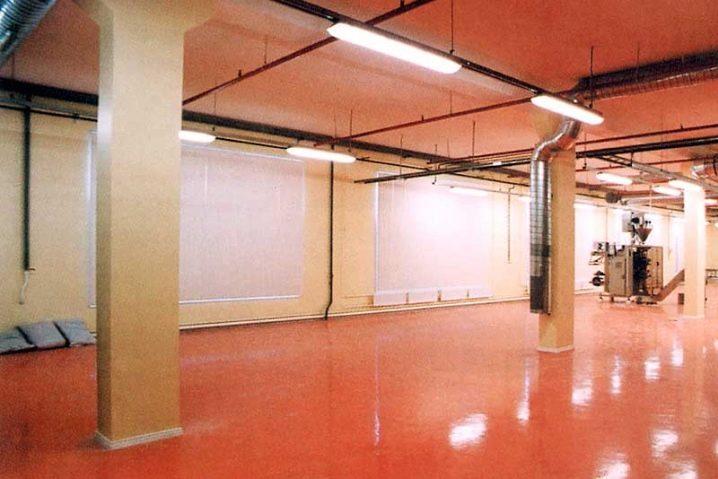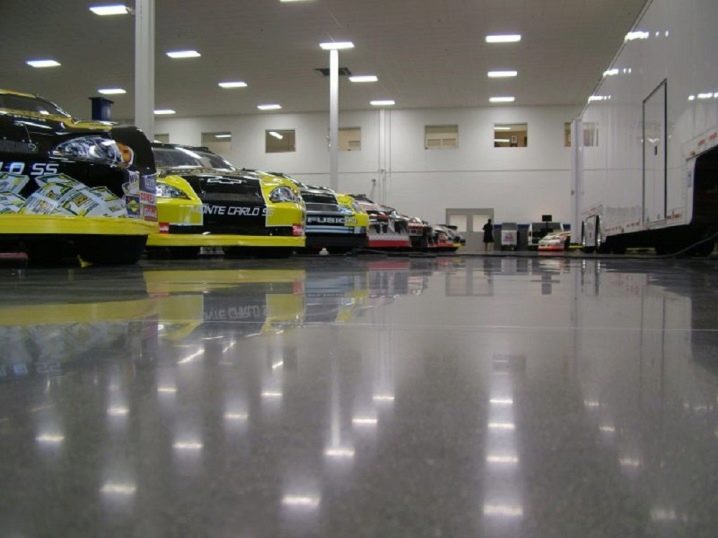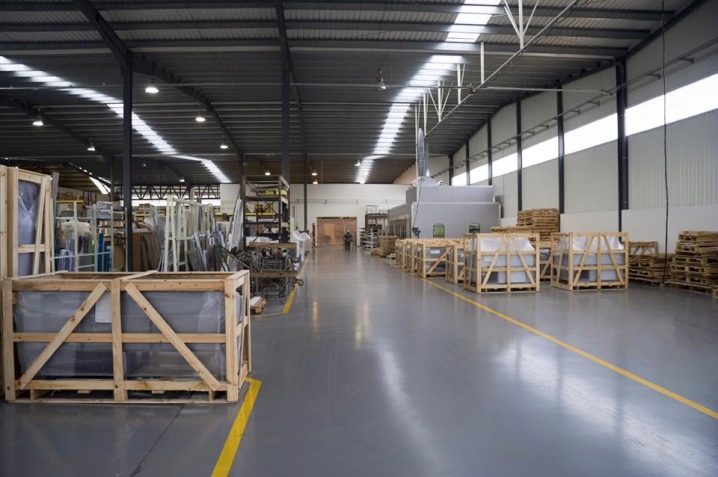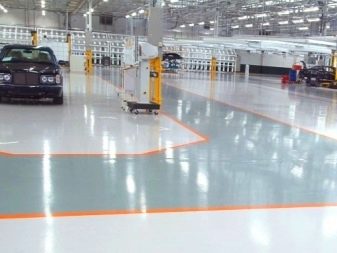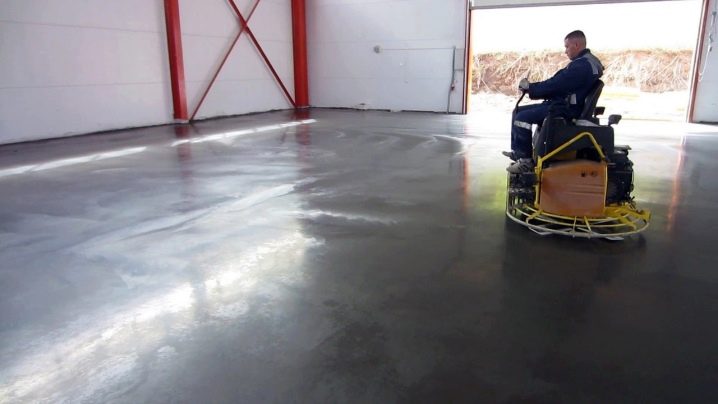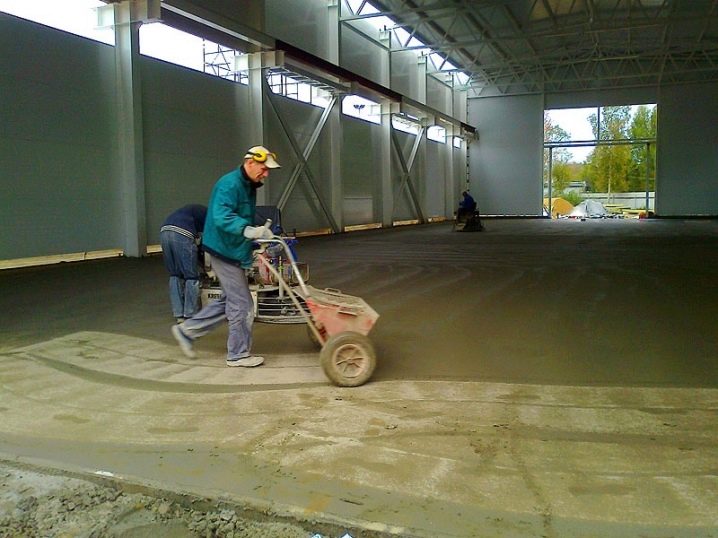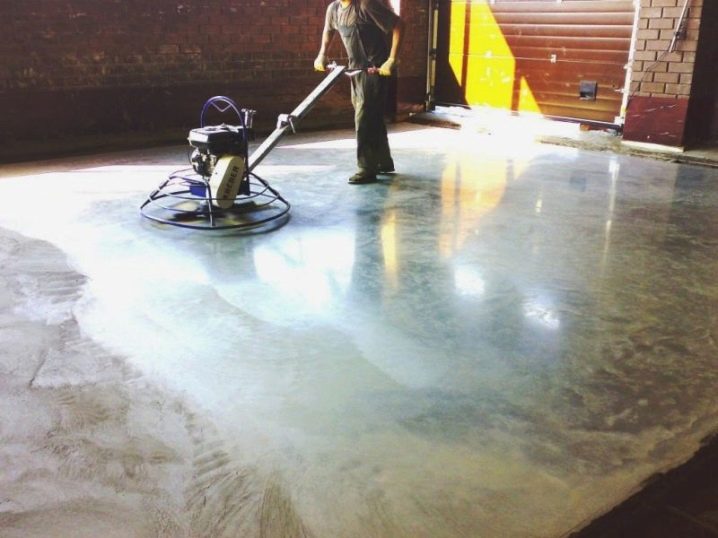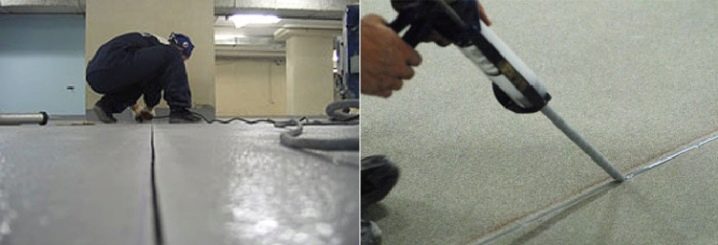What is topping for concrete floors?
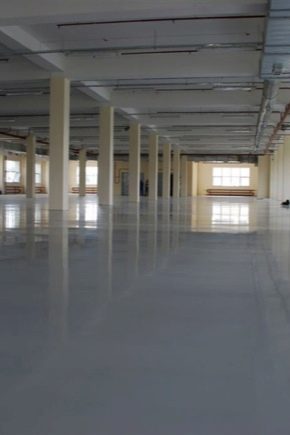
Concrete is a versatile and fairly durable material that is widely used in modern construction. However, after a time even such a surface is able to deform under the influence of various environmental factors: low temperatures, humidity and loads. To strengthen the concrete pavement was invented and now successfully applied a special mixture - topping.
Special features
As concrete floors are exploited, cracks and chips may appear in their structure. The top layer gradually collapses and forms dust. Dust is very harmful to humans and can lead to various diseases.
The solution to the problem can be topping. This is a hardening composition applied to the top layer of concrete in order to harden it.
Applying topping on a concrete surface occurs by laying and grinding.It consists of the following components: plasticizer, cement and fillers with dyes.
The main characteristics of topping largely depend on the type of plasticizers. These are special additives from surfactants. They should be considered in more detail.
There are several types:
- superplasticizers increase the density, mobility and moisture resistance. Actually use them at high temperatures. Accelerators set strength increase strength and time of its set;
- concrete modifiers give concrete resistance to corrosion and cold temperatures, provide a long service life;
- for construction works with concrete in the winter, a mixture with antifreeze effect is added to it;
- for pouring reinforced thin structures suitable mixture for compacting concrete.
Additives can be complex, combining all the above properties.
Plasticizers help reduce concrete consumption, increase adhesion and reduce labor costs. They are used also when laying warm floors, when filling the base, at the device of a bulk floor.
Kinds
The consistency distinguish:
- Liquid topping contains inorganic compounds, they dissolve in water. When applied to the flooring, this composition falls into the porous structure of concrete. As a result of this, reactions occur, seals that are resistant to moisture are formed.
This type of topping can be applied both to fresh concrete and to older ones. It is applied and left to dry completely, then polished.
- Dry topping - usually powdered, or in the form of crumbs. He crumbles, then rammed and polished. The dry method of application is more popular among buyers, because it gives more characteristics to concrete than liquid.
The composition of the used dry filler is distinguished:
- Quartz with dyes. It is used to strengthen and decorate flooring. Suitable for floors with medium loads: in a shop, garage or warehouse. It is suitable for use in private construction;
- From corundum. This filler is designed for concrete floors with heavy loads and frequent use. Gives strength and resistance to abrasion. It has a dim gloss;
- With metal particles. This composition is recommended for floors designed for very high loads, the effects of heavy machinery. But, as you know, metal is susceptible to corrosion when exposed to water.
According to the methods of application, the following types of topping are distinguished:
- Application is considered standard and inexpensive when dry topping is poured onto a newly laid concrete surface. Usually its thickness is 2-3 mm;
- Concrete becomes more reinforced if wet topping is applied to its wet surface. The thickness of such a coating with topping ranges from 5 to 15 millimeters;
- and the third method is a method of applying a wet composition to a dry surface of a concrete floor.
Application
The most commonly used topping in the construction and repair of those buildings and objects where the floors are exposed to a large and constant load.
Top ping is used in both residential and industrial construction.
The category of industrial buildings includes plants, terminals, workshops with heavy machinery and installations. But manufacturers do not recommend topping in the production of chemicals such as acids.
Among civilian objects worth noting apartment buildings,public institutions with a large flow of people, stadiums, airports, hypermarkets, railway stations, parking lots, shopping and entertainment centers, large cold stores.
If desired, you can apply in private construction to give the floor super strength.
Advantages and disadvantages
The use of concrete with a top layer of topping has the following advantages:
- fast installation and simple application technology;
- low cost of materials;
- long service life. Increased strength and stability eliminates cracks and chips in concrete. The floor becomes resistant to shock, abrasion of the surface;
- topping makes the concrete floor smooth and not slippery;
- increased hygiene, less dust and dirt on the surface;
- decorative floor is achieved through dyes. Fillers can paint it in different colors (black, gray, blue, yellow and others), thanks to which you can divide the space into zones. Floor covering does not require laying of additional materials.
It should be noted that topping only improves the properties of the concrete pavement. Therefore, to work, you need to choose high-quality concrete with a brand higher than M300.
Excess water in the concrete will cause deformation for the top layer during drying. And the lack of moisture will lead to an increase in the drying time of topping, it will be loose and unevenly dried out.
If the concrete is dirty or dusty, the applied topping may peel off.
The final appearance of the topping will depend on the uniformity of its installation and grouting. If the work is done incorrectly, the restoration and repair of topping will be expensive.
Application technology
Before applying topping, it is necessary to prepare the base. If you intend to update the old floor, then it must first be cleaned of dirt. Works are required to be carried out in the warm and dry room without drafts.
Topping consumption depends on the level of load on the floor. With an average load it ranges from 3 to 5 kg per square meter. With high loads from 5 to 8 kg.
Liquid topping is applied to the surface of the concrete, then spread evenly. Fluid chemical mixture penetrates the concrete to a depth of 5 millimeters, where the reaction with gelation occurs. The remains of the liquid composition is removed from the floor covering.
For the application of dry topping using special carts, or scatter manually. Carts are equipped with handles and wheels.They also have drums, during the rotation of which the mixture evenly falls on the floor surface.
Application takes place in several stages. First pour 75% of the mixture. If it has darkened, it means that it has absorbed the moisture of the concrete. You can start grouting from the walls, from the doorways.
Then the rest of the topping is applied and the grout is repeated. The last grout is done after the surface has set, when there will be no visible marks on the surface when pressed.
After hardening the surface, it is polished with a special machine. Then impregnation is applied (sealer or curing), or water-holding compositions. Additionally, you can cover the floor with plastic wrap.
A couple of days after the completion of all work should be cut deformation seams. They are made in order for the floors to take their shape, sag and not cracked. After 15-30 days, the seams are cleaned and tape are installed for sealing, they are fixed with the help of a hermetic compound.
After complete drying of the sealant, concrete floors can be operated.
You can see the technology of applying and grouting topping in the next video.
